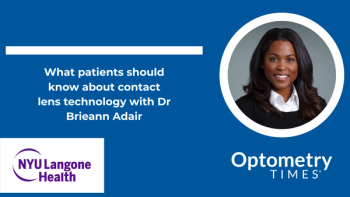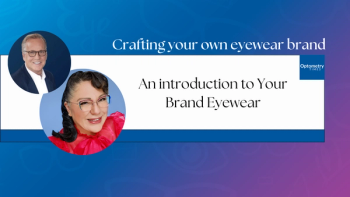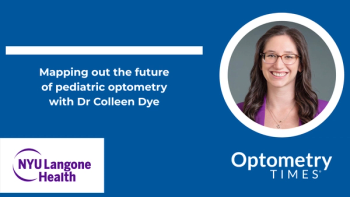
The comanagement of contact lens patients
Brieann Adair, OD, discusses popular opinion among patients regarding contact lens wear.
Brieann Adair, OD, presented a comprehensive examination of the evolving role of contact lenses in contemporary eye care, expanding far beyond traditional vision correction to encompass a range of therapeutic and preventative applications. Adair began by dispelling common misconceptions, emphasizing that contact lenses are not solely optical aids but are increasingly integrated into the management of various systemic and ocular conditions. She highlighted patients with rheumatological diseases, different inflammatory disorders, and post-facial or oculoplastic surgeries, noting that such individuals often find significant benefit in contact lens use as part of a holistic treatment strategy. Many patients, as described, express surprise and even frustration at not having been informed earlier about how contact lenses could restore their comfort and vision, underscoring a need for greater awareness and interdisciplinary collaboration in patient education.
Adair shifted to the importance of co-management among healthcare providers. She explained that while some referrals for specialty contact lens care are straightforward — especially from specialists attuned to eye-related complications — others are discovered during routine exams or through direct patient complaints. Notably, endocrinologists, such as those treating diabetic patients, play a critical role in annual referrals, facilitating early detection of ocular issues. There is specific mention of managing conditions like Sjogren syndrome with scleral lenses to address ocular dryness and mucosal challenges, as well as working with facial plastic and oculoplastic specialists to provide solutions for complex surface eye problems that cannot be tackled solely within those subspecialties.
Innovation in contact lens technology is another focal point, particularly regarding multifocal lenses for patients who have undergone cataract surgery. With the removal of the natural lens and consequent loss of focusing ability, multifocal contact lenses offer patients freedom from reading glasses and improved flexibility for seeing at various distances. This technology is now being extended to accommodate patients with astigmatism as well, reflecting ongoing advancements by major manufacturers.
The rising prevalence of myopia in school-age children is addressed, with statistics citing 40-47% of children being nearsighted. Adair discussed the critical role of specialty lenses, such as orthokeratology or other myopia control designs, in slowing disease progression — a service offered at NYU, where more children are being fitted proactively. These innovations not only enhance quality of life by reducing high myopia risks but also represent an intersection of child-friendly vision correction and preventative eye health.
Overall, Adair painted a picture of contact lenses as pivotal tools in the broader context of systemic and preventative healthcare, requiring close collaboration between various medical disciplines, ongoing innovation, and patient-centered education.
Newsletter
Want more insights like this? Subscribe to Optometry Times and get clinical pearls and practice tips delivered straight to your inbox.



















































.png)


